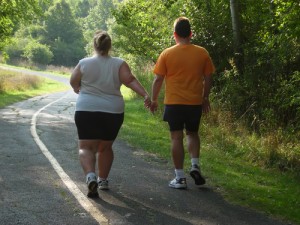New bariatric surgery less invasive
Thursday, January 26, 2012
By Sylvia Perez and Christine Tressel
January 26, 2012 (CHICAGO) (WLS) -- Laura Adair is ready for a change. She wants to be healthier but diet and exercise were not working.
When the scale tipped at more than 240 pounds a simple walk down to the beach got scary, and she knew she was losing control. "As I was coming back up the stairs I had completely lost my breath like an asthma attack," Adair said. "And I was alone and I completely panicked. I realized at that moment I had lost my life."
Last October she made the decision to have bariatric surgery.
This is something new in weight loss surgery. Adair is undergoing a novel procedure at St. Joseph Hospital in Chicago called laparoscopic gastric plication.
Bariatric surgeon Dr. Rami Lutfi is performing and studying the procedure at St. Joseph.
"This operation does not involve removing stomach, cutting anywhere in the GI tract or altering the anatomy," said Dr. Lutfi. "It's simply folding the stomach on its self, a very simple concept.
By simply stitching the stomach up through small openings its volume is reduced by 80 percent, so patients can eat less and still feel full.
The operation is less invasive than gastric bypass or a gastric sleeve procedure, which involve removing a part of the stomach or rerouting the intestines.
Dr. Lutfi believes that because of its simplicity it will not only help people lose weight but have less complications.
"We are very excited about it, our patients are very happy with it," he said.
While still investigational it could be used to augment a lap-band, a removable device to aid weight-loss. There is also a possibility gastric plication could be undone.
Bariatric surgeons at the Cleveland Clinic say gastric plication can help get rid of 50-55 percent of excess weight.
That's more than the lap band, but less than the gastric sleeve or bypass, and if your body mass index is over 50 this may not be right for you.
"Most people who want to lose somewhere between 50 and 100 pounds are going to do quite well with this operation," said Dr. Stacy Brethauer, bariatric surgeon at Cleveland Clinic. I think its simplicity is behind the attractiveness to patients."
So far Adair says she has lost 47 pounds.
"At first it came off pretty fast, but now it's, you know, one or two three pounds a week it's always very steady," Adair said.
She says the change has been fairly easy. She has been eating healthier but still most of what she wants, just in smaller portions.
She doesn't feel starved, just content.
"I can mess around with my kids so housework and I feel good," she said. "I don't have to take a nap, I'm not tired I'm not grumpy, I'm not thinking about food all the time, I'm living my life again."
St. Joseph Hospital
Gastric Plication or other Bariatric Surgeries
773-665-3170
Tora Vinci
Media Relations
Cleveland Clinic
216-444-2412
Vinciv@ccf.org






 Academics from four groups have revealed a molecular mechanism that helps regulate how much energy our muscles burn.
Academics from four groups have revealed a molecular mechanism that helps regulate how much energy our muscles burn.




